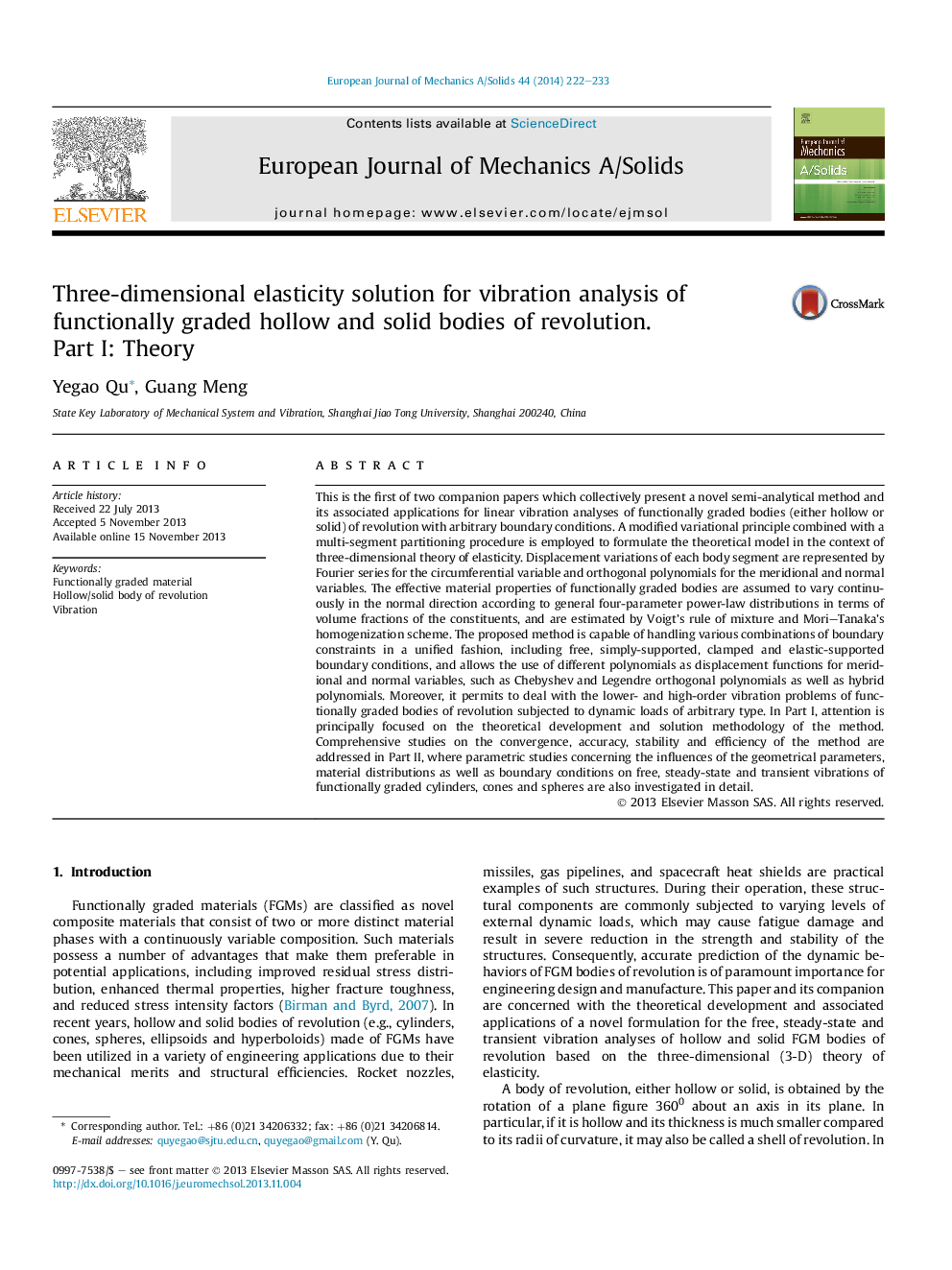| Article ID | Journal | Published Year | Pages | File Type |
|---|---|---|---|---|
| 774110 | European Journal of Mechanics - A/Solids | 2014 | 12 Pages |
•A semi-analytical method is presented for vibration analysis of functionally graded bodies of revolution.•Theoretical model is formulated using a modified variational principle based on 3-D theory of elasticity.•Displacement variations of each segment are represented by Fourier series and orthogonal polynomials.•The method is capable of handling free, steady-state and transient vibration problems.
This is the first of two companion papers which collectively present a novel semi-analytical method and its associated applications for linear vibration analyses of functionally graded bodies (either hollow or solid) of revolution with arbitrary boundary conditions. A modified variational principle combined with a multi-segment partitioning procedure is employed to formulate the theoretical model in the context of three-dimensional theory of elasticity. Displacement variations of each body segment are represented by Fourier series for the circumferential variable and orthogonal polynomials for the meridional and normal variables. The effective material properties of functionally graded bodies are assumed to vary continuously in the normal direction according to general four-parameter power-law distributions in terms of volume fractions of the constituents, and are estimated by Voigt's rule of mixture and Mori–Tanaka's homogenization scheme. The proposed method is capable of handling various combinations of boundary constraints in a unified fashion, including free, simply-supported, clamped and elastic-supported boundary conditions, and allows the use of different polynomials as displacement functions for meridional and normal variables, such as Chebyshev and Legendre orthogonal polynomials as well as hybrid polynomials. Moreover, it permits to deal with the lower- and high-order vibration problems of functionally graded bodies of revolution subjected to dynamic loads of arbitrary type. In Part I, attention is principally focused on the theoretical development and solution methodology of the method. Comprehensive studies on the convergence, accuracy, stability and efficiency of the method are addressed in Part II, where parametric studies concerning the influences of the geometrical parameters, material distributions as well as boundary conditions on free, steady-state and transient vibrations of functionally graded cylinders, cones and spheres are also investigated in detail.
